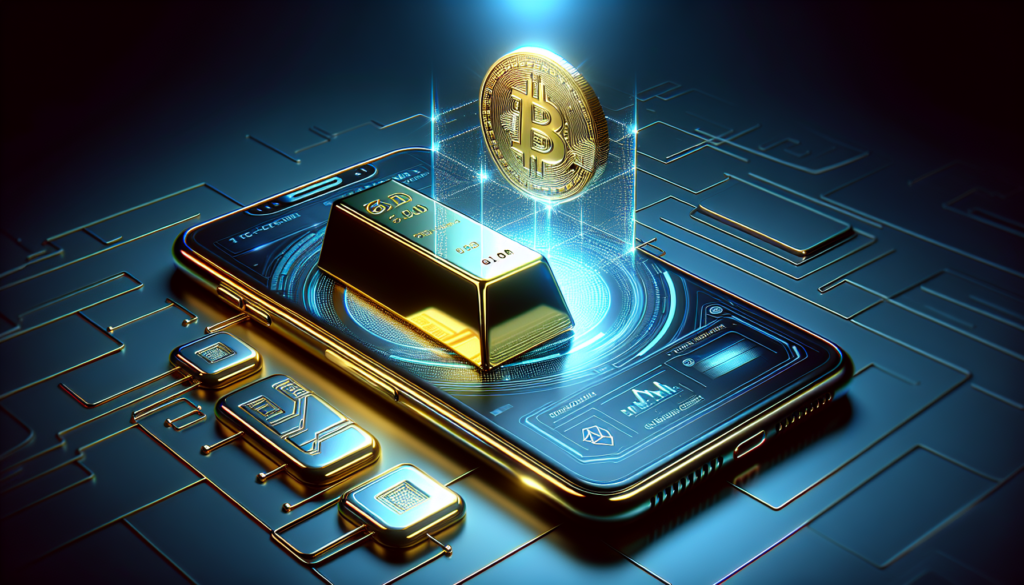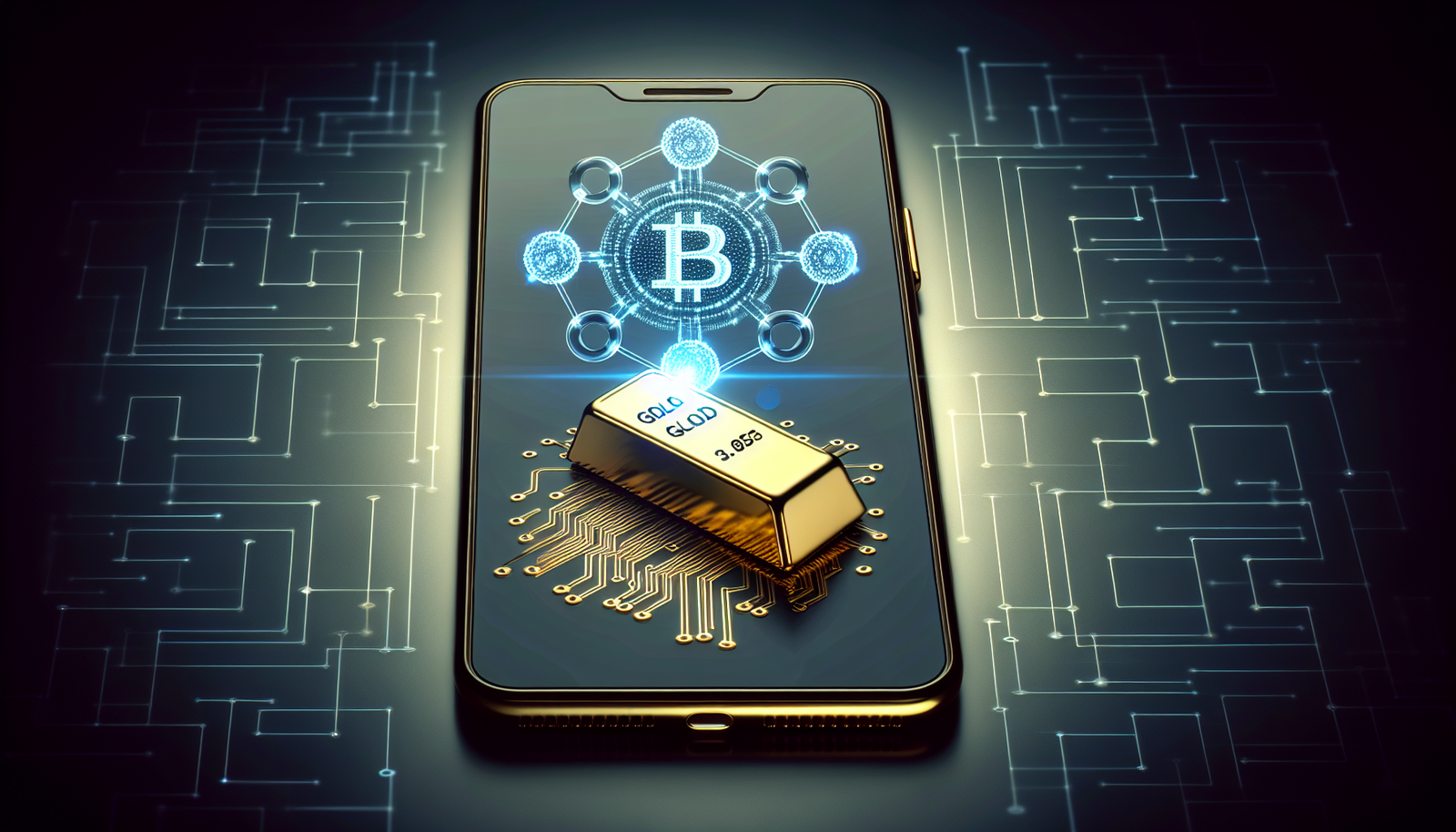Have you ever wondered if there’s a revolutionary way to combine the stability of gold with the convenience of digital currencies? Well, look no further because gold-backed digital currencies might just be the next big thing in the world of finance. Imagine having the freedom to securely and instantly transfer gold electronically, providing a solution to the age-old challenge of storing and transporting physical gold. In this article, we’ll explore the potential benefits and drawbacks of this emerging trend, and how it could reshape the way we perceive and utilize both gold and digital currencies. Get ready to discover the exciting possibilities of this groundbreaking financial innovation.

What are Gold-Backed Digital Currencies?
Definition
Gold-backed digital currencies, also known as gold-backed cryptocurrencies, are a new form of digital currency that combines the stability and value of gold with the advantages of blockchain technology. These digital currencies are issued by trustworthy entities and are backed by physical gold held in reserve. Each digital token represents a specific amount of gold, which can be redeemed for physical gold bullion if desired.
How they work
Gold-backed digital currencies are created and managed using blockchain technology. Each token is backed by a certain amount of physical gold, which is securely stored in vaults. The blockchain ensures transparency and traceability, allowing users to verify the authenticity and ownership of the gold backing their digital tokens. Transactions involving these digital currencies are recorded on the blockchain, providing a secure and decentralized ledger of transactions.
Advantages and disadvantages
One of the main advantages of gold-backed digital currencies is the stability and tangibility that comes from being backed by physical gold. Gold has a long history of being a reliable store of value, making these digital currencies an attractive option for those seeking stability in an increasingly volatile financial market.
Another advantage is the ease of use and accessibility. Gold-backed digital currencies can be easily transferred and traded on digital platforms, offering users a convenient and secure way to hold and transact with gold.
However, there are also some disadvantages to consider. One of the main challenges is price volatility. While gold itself is relatively stable, the value of the digital currency may fluctuate due to market forces and demand. Additionally, there are regulatory concerns and potential counterparty risks associated with these digital currencies, which need to be carefully considered.
The Rise of Gold-Backed Digital Currencies
Historical context
The concept of gold-backed digital currencies has its roots in the historical use of gold as a medium of exchange and store of value. Throughout history, gold has been valued for its rarity, durability, and universal acceptance. The introduction of digital currencies and blockchain technology has paved the way for the integration of these two worlds.
Current market trends
In recent years, there has been a growing interest and demand for gold-backed digital currencies. Investors and individuals are seeking alternatives to traditional fiat currencies and are attracted to the stability and tangibility that gold offers. The rise of blockchain technology has also provided the infrastructure for the creation and management of these digital currencies, further fueling their popularity.
Key players and initiatives
There are several key players in the gold-backed digital currency space. One notable example is Digix, which offers a platform that allows users to buy and sell digital tokens backed by physical gold. Another player in the market is Paxos Gold, which issues digital tokens representing ownership of physical gold held in its reserves. Tether Gold is also gaining traction as a trusted provider of gold-backed digital currency.
Why Gold-Backed Digital Currencies are Gaining Popularity
Security and stability
One of the main reasons for the increasing popularity of gold-backed digital currencies is the security and stability they offer. The physical backing of gold provides a tangible asset that can withstand economic downturns and volatility. This stability makes these digital currencies an attractive option for individuals and investors looking to protect their wealth.
Protection against inflation
Another advantage of gold-backed digital currencies is their ability to protect against inflation. Gold has historically retained its value over time and is considered a safe-haven asset. By pegging digital currencies to gold, individuals can hedge against inflation and the erosion of purchasing power that often accompanies fiat currencies.
Ease of use and accessibility
Gold-backed digital currencies are also gaining popularity due to their ease of use and accessibility. Unlike physical gold, which can be cumbersome to store and transport, digital tokens can be easily transferred and traded on digital platforms. This convenience allows individuals to buy, sell, and transact with gold in a more efficient and convenient manner.
Challenges and Risks Associated with Gold-Backed Digital Currencies
Price volatility
While gold itself is known for its stability, the value of gold-backed digital currencies can still be subject to price volatility. Market forces and demand can impact the value of these digital currencies, leading to fluctuations in their price. This volatility can pose risks for investors and individuals looking for a stable store of value.
Counterparty risk
Another challenge associated with gold-backed digital currencies is counterparty risk. While reputable providers ensure the physical gold backing the digital tokens, there is still a level of trust required between the user and the issuer. Users must trust that the issuer has the physical gold reserves to back the digital tokens and that the issuer will honor requests for redemption in physical gold.
Regulatory concerns
Gold-backed digital currencies are still a relatively new concept, and as such, there are regulatory concerns that need to be addressed. The regulatory landscape surrounding digital currencies is constantly evolving, and it is important for users and investors to consider the legal and regulatory implications before engaging with these assets.

How Gold-Backed Digital Currencies are Redefining the Financial Landscape
Diversification of investment portfolios
Gold-backed digital currencies offer individuals and investors a unique opportunity to diversify their investment portfolios. By adding a digital asset backed by physical gold, investors can mitigate risks associated with traditional financial markets and potentially enhance portfolio performance.
Integration with existing financial systems
The introduction of gold-backed digital currencies has the potential to integrate with existing financial systems. This integration can provide individuals and businesses with alternative payment methods and financial services, reducing reliance on traditional banking systems.
Impact on traditional banking
Gold-backed digital currencies pose a potential challenge to traditional banking systems. As more individuals and businesses adopt these digital currencies, there may be a decrease in demand for traditional banking services. This could lead to a shift in the financial landscape, with traditional banks needing to adapt to stay relevant.
The Potential Impact of Gold-Backed Digital Currencies on the Global Economy
Stability of monetary systems
Gold-backed digital currencies have the potential to provide stability to monetary systems across the globe. By introducing a tangible asset like gold into the digital currency space, these currencies can offer a reliable store of value and a hedge against economic volatility.
Wealth redistribution
Gold-backed digital currencies may also have implications for wealth redistribution. By providing individuals with access to gold through digital platforms, these currencies can potentially provide opportunities for wealth accumulation and financial inclusion.
Geopolitical implications
The adoption of gold-backed digital currencies may also have geopolitical implications. Gold has historically been a valuable and sought-after asset, and the introduction of digital currencies backed by gold could potentially shift the balance of power in the global economy.
Gold-Backed Digital Currencies vs. Traditional Gold Investments
Comparing returns and risks
When comparing gold-backed digital currencies to traditional gold investments, it is important to consider the potential returns and risks associated with each. While both offer exposure to the value of gold, digital currencies may offer greater accessibility and liquidity, while traditional gold investments may provide a more stable and tangible asset.
Liquidity and accessibility
Gold-backed digital currencies can offer greater liquidity and accessibility compared to traditional gold investments. Digital tokens can be easily traded on digital platforms, allowing for quick and efficient transactions. Traditional gold investments, on the other hand, may require physical delivery or storage, which can limit liquidity and accessibility.
Storage and security
One advantage of traditional gold investments is the physical ownership and control of the asset. With gold-backed digital currencies, users rely on trusted issuers to store and secure the physical gold. While reputable providers ensure the security of the gold reserves, there is still an element of trust involved.
The Role of Blockchain Technology in Gold-Backed Digital Currencies
Transparency and traceability
Blockchain technology plays a crucial role in gold-backed digital currencies by providing transparency and traceability. Each transaction involving these digital currencies is recorded on the blockchain, creating a decentralized ledger that can be verified by all participants. This transparency ensures the authenticity and ownership of the underlying gold.
Smart contract functionality
Smart contracts, which are self-executing contracts with the terms of the agreement directly written into code, are another key feature of gold-backed digital currencies. Smart contracts can automate various processes such as the issuance and redemption of digital tokens, ensuring a secure and efficient system for users.
Blockchain scalability
Scalability is a key consideration for any digital currency, and blockchain technology provides potential solutions to address this challenge. With advancements in blockchain scalability, gold-backed digital currencies can handle a large volume of transactions without compromising security or efficiency.
Examples of Gold-Backed Digital Currency Projects
Digix
Digix is a prominent player in the gold-backed digital currency space. Their platform allows users to buy and sell digital tokens called DGX, which represent ownership of physical gold stored in highly secured vaults. Digix ensures the transparency and verifiability of their tokens by leveraging blockchain technology.
Paxos Gold
Paxos Gold is another notable gold-backed digital currency initiative. Paxos offers digital tokens, known as PAXG, that are redeemable for physical gold. Each token represents one fine troy ounce of a London Good Delivery gold bar, ensuring the backing and purity of the gold.
Tether Gold
Tether Gold, launched by Tether, the issuer of the popular stablecoin USDT, is a gold-backed digital currency that provides users with exposure to physical gold. Each token represents ownership of one troy ounce of gold held in a Swiss vault, offering users a secure and reliable way to hold gold.
The Future of Gold-Backed Digital Currencies
Potential adoption rates
The future of gold-backed digital currencies looks promising, with potential for widespread adoption. As more individuals and institutions seek alternatives to traditional fiat currencies and look for secure and stable assets, gold-backed digital currencies offer an attractive option. However, the rate of adoption will depend on various factors including regulatory developments and technological advancements.
Technological advancements
Advancements in blockchain technology and digital infrastructure will play a significant role in shaping the future of gold-backed digital currencies. As scalability, security, and user experience improve, more individuals and businesses may choose to adopt these digital currencies as part of their financial portfolio.
Regulatory developments
Regulatory developments will also be a key factor in determining the future of gold-backed digital currencies. As governments and regulatory bodies establish guidelines and frameworks for digital currencies, individuals and institutions will have more clarity and confidence in engaging with these assets. Clear regulations can help foster trust and drive adoption.
In conclusion, gold-backed digital currencies are gaining popularity as they offer security, stability, and accessibility to individuals and investors. Despite challenges such as price volatility and regulatory concerns, these digital currencies have the potential to redefine the financial landscape and have a significant impact on the global economy. With the role of blockchain technology, examples of major players in the market, and considerations when comparing them to traditional gold investments, gold-backed digital currencies are poised to shape the future of finance. As technological advancements and regulatory developments continue to unfold, the future of gold-backed digital currencies looks promising, with potential for widespread adoption and significant innovation in the financial industry.

